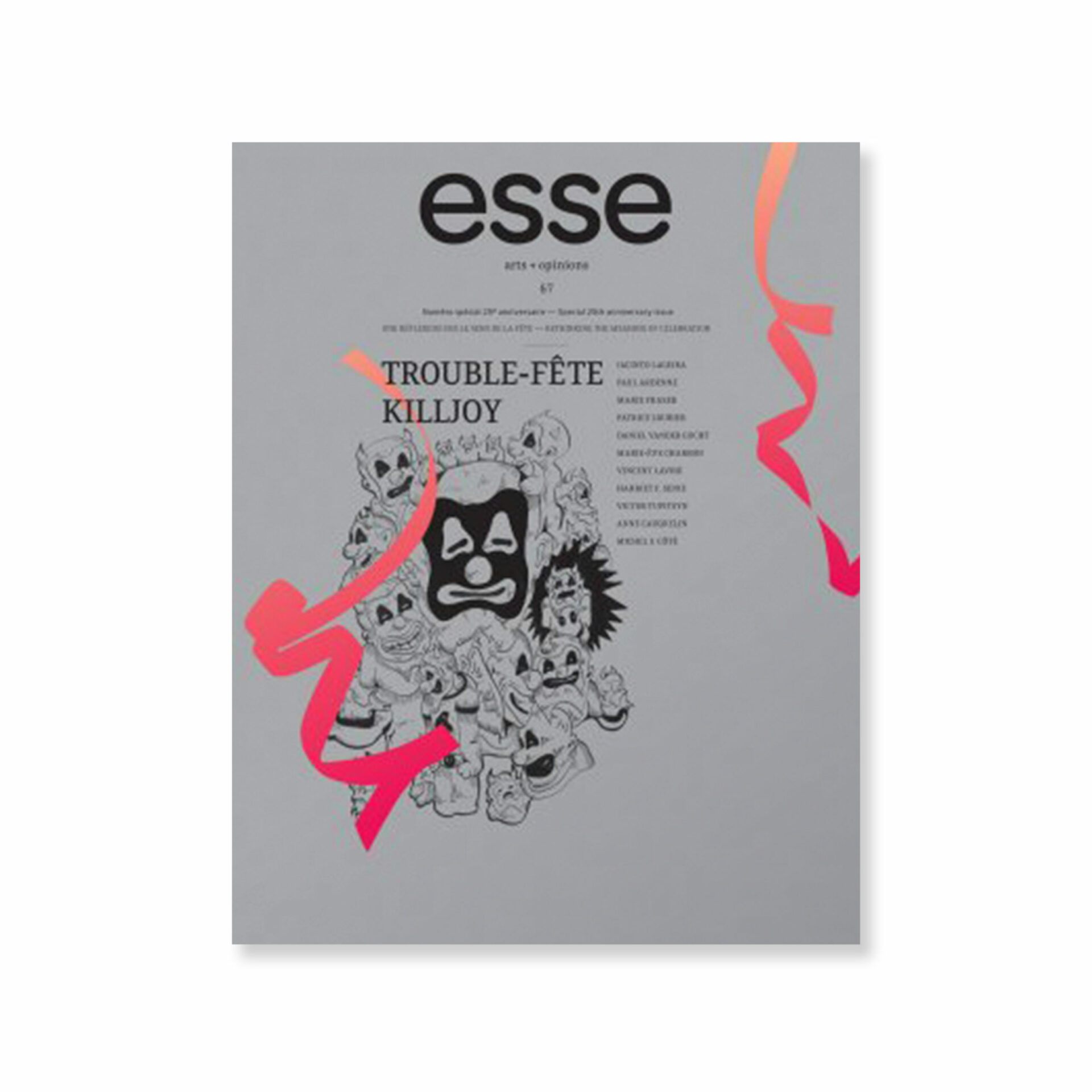Once a Killjoy, Always a Killjoy
With this issue we chose to clearly mark our 25th anniversary, not by producing a commemorative publication but by focussing on the present rather than the past. A celebration of the present? Yes, but what’s there to celebrate in 2009? Aside from feeling proud of what has been accomplished, underlining an anniversary requires additional work and investment—the size of this publication proves it—yet with the same limited resources. In the context of a crisis that has ramifications in the cultural sector, the desire to celebrate is certainly not as strong. Moreover, how is it possible to rejoice when our leaders are progressively and slyly withdrawing their support to culture?1 1 - It is impossible not to mention, aside from the important cuts in a dozen or so cultural programs a year ago in August, the obtuse policy of Canadian Heritage in regard to funding cultural magazines, which led recently to their withdrawing their financial support to esse. In such circumstances, celebration takes on a more sour, cynical twist. And so, it is under the sign of anti-celebration that esse marks 25 years of activities.
The double theme of trouble-fête (party pooper) and killjoy seemed the perfect locus for this kind of event. From a citizen perspective, we assert a critical stance against the multiplication of celebrations that tend to get lost in increasingly trivial considerations; as a cultural organization, we proclaim our indignation concerning the withdrawal of state funding in culture. As a publisher, what we want the most is to open our pages to committed texts exploring the meaning of celebration. For this reason we’ve brought together eleven authors whose writing we particularly appreciate. Some are faithful friends and contributors to the magazine, while others are first-timers. They have been invited to consider the theme not only of celebration, but also of commemoration, which is often inherent to anniversaries. In these essays, celebration is at times analyzed for its unifying potential, at times for its deceptiveness. Among others, it has a critical power that numerous artists have decided to exploit, while others prefer reactivating the festive in art—celebration for celebration’s sake. Different forms of commemoration are also studied, critiquing in passing the duty to remember that sometimes tends to make the present seem better. The resulting works and actions—re-enactments, transient memorials, spontaneous monuments or anti-monuments—testify to the multiplicity of forms possible and foreground some attempts at preserving memory through the use of the monument—a practice we thought worth questioning.
We are also publishing an impressive portfolio bringing together fourteen artists whose twenty works are particularly in synch with the theme, be it by the various codes of celebration they employ, a commemorative impact that evokes the monument or anti-monument, or a critical or ironic approach using killjoy strategies. Also, Michel F. (T.) Côté, who has always accepted the challenge of basing his “Affaire de zouave” column on our chosen themes, proposes five tried-and-true killjoy rules. Once a killjoy, always a killjoy—that’s the esse spirit.
But let’s be frank. Beyond its deliberately ironic and provoking title and its diverse critical expressions, Trouble-fête/Killjoy still underscores esse’s lasting presence on the artistic scene. After all, this 25th anniversary also acknowledges our enduring involvement in contemporary art, which would not have had the same impact without the support of our financial partners and, most importantly, of our readers. We also owe the evolution of our magazine through the years to our numerous contributors who have ensured its success, be it by participating in one issue, for one year, a decade or two. We sincerely thank you all.
